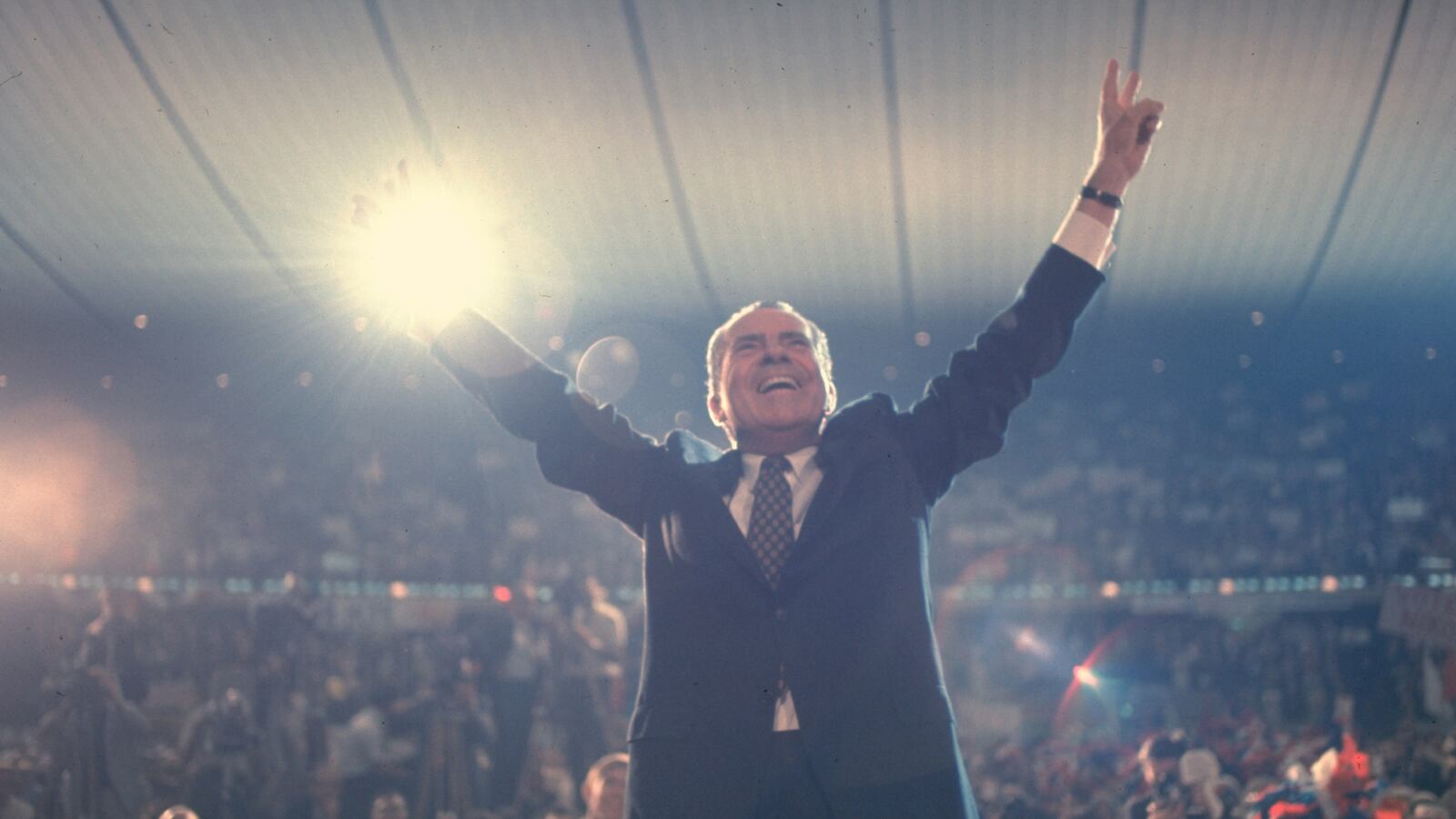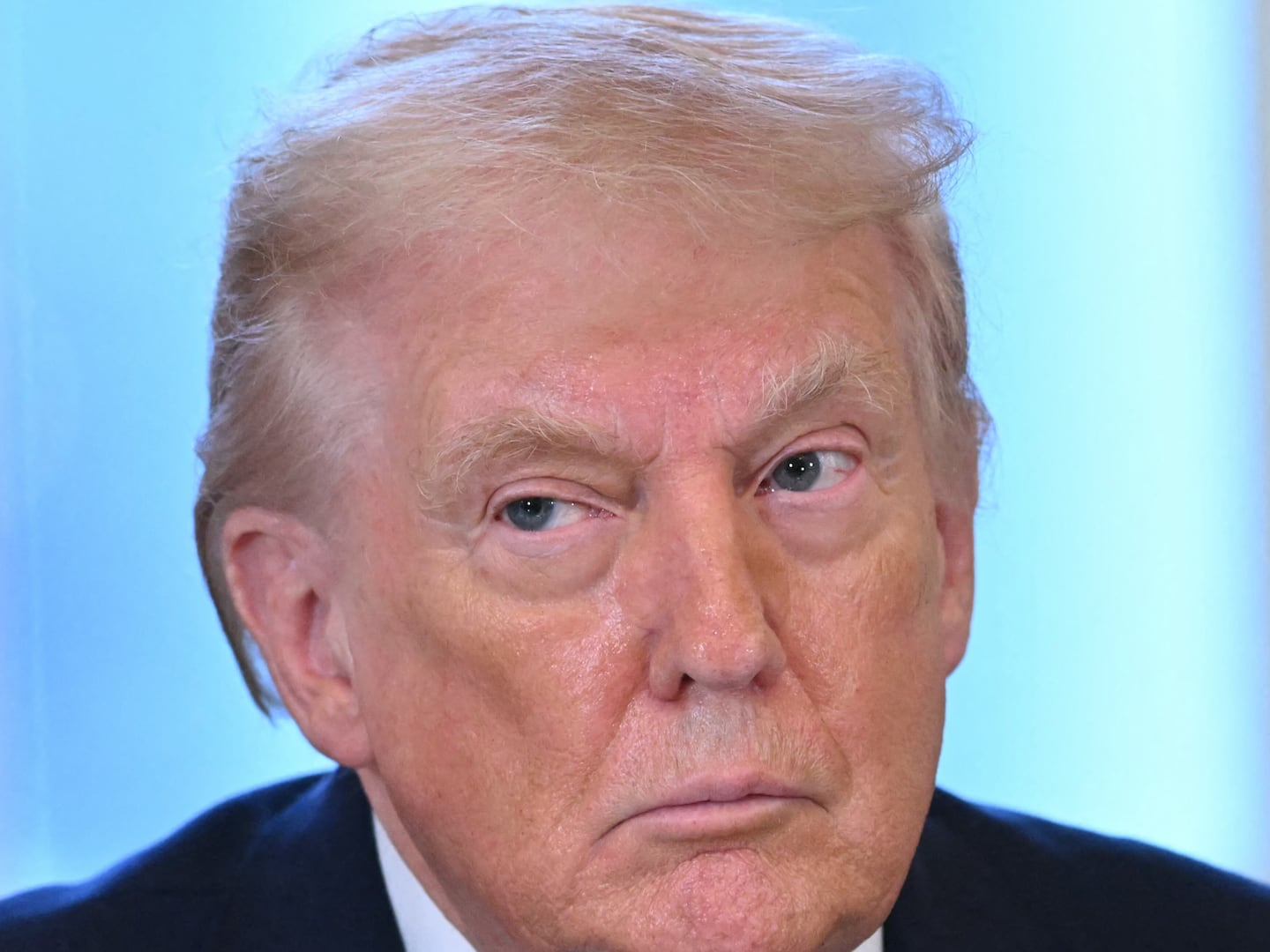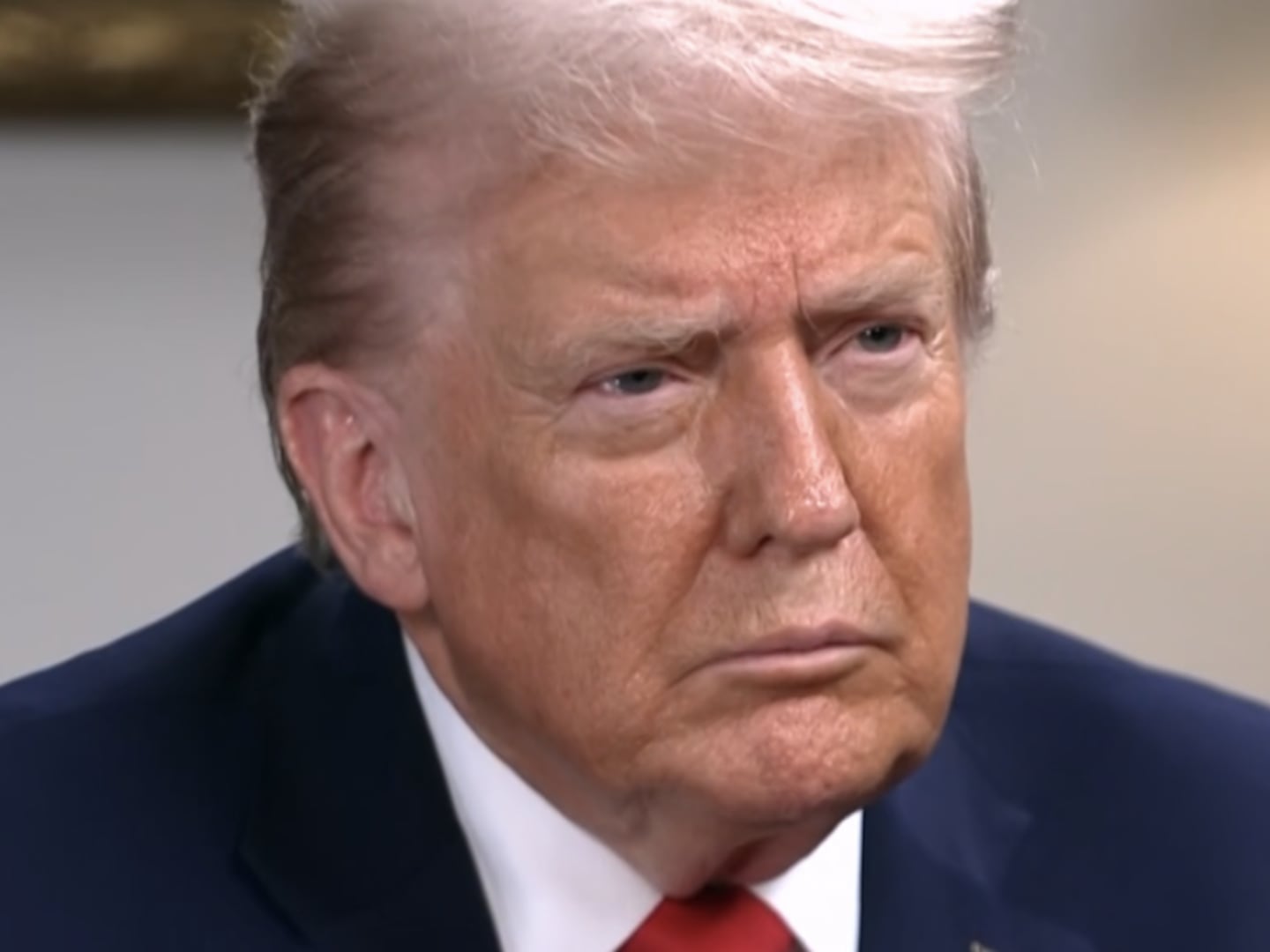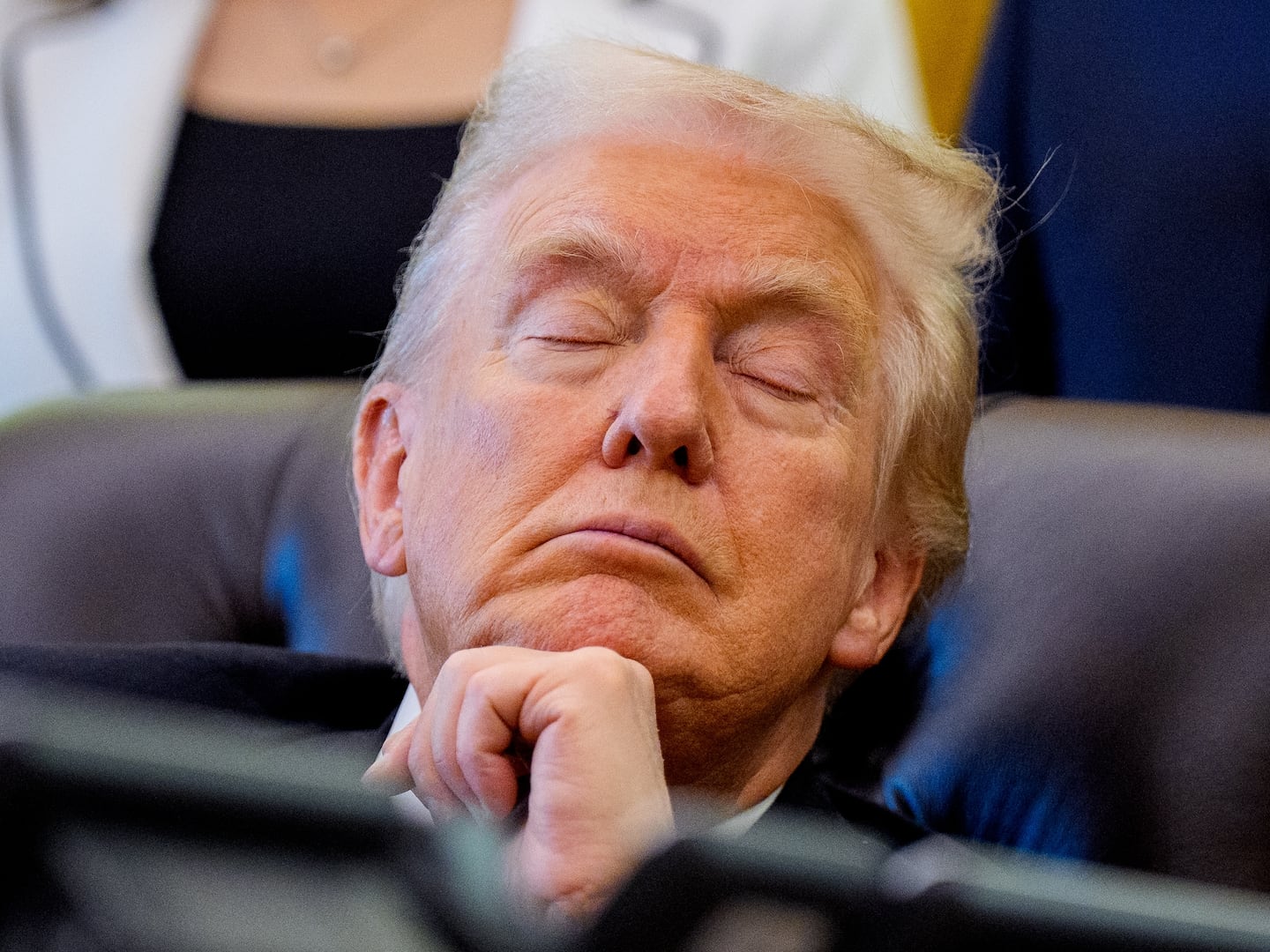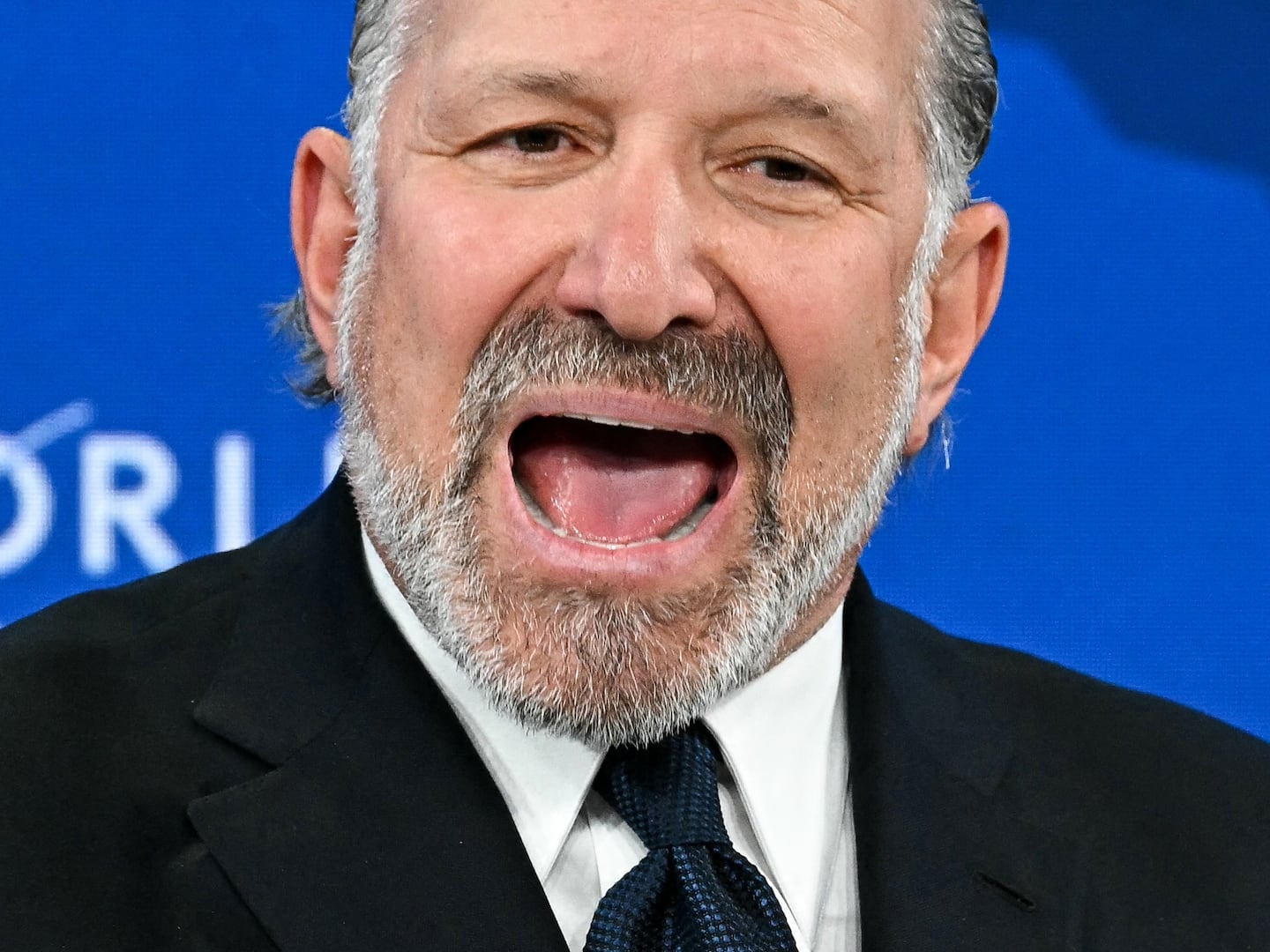Few presidential elections evoke more powerful memories and images than 1968: the hopeful campaign and then unimaginable assassination of Robert Kennedy (two months after Martin Luther King had been felled); the “Clean for Gene” insurgency led by Eugene McCarthy and spurred by the seemingly unending carnage in Vietnam; and Lyndon Johnson’s bombshell decision to drop out of the presidential campaign. There was the rise of George Wallace and the primal violence that accompanied his political rallies; the sight of Chicago cops and anti-war demonstrators clashing at the Democrat National Convention in Chicago; Hubert Humphrey’s sad fall campaign for the White House, interrupted on a seemingly daily basis by anti-war protesters; George Romney becoming a national punchline for complaining that he’d been “brainwashed” on the Vietnam War; and Spiro Agnew … well, being Spiro Agnew.
Yet, the one person often given short shrift when we talk about 1968 is the one who was the last man standing when all was said and done—Richard Nixon.
In a year when grassroots political movements helped to topple Lyndon Johnson and got George Wallace on the ballot of all 50 states and 13 percent of the popular vote on Election Day, it’s perhaps the greatest irony of 1968 that a leader who was the embodiment of the political status quo ended up prevailing on Election Day. How Richard Nixon won that year is a story of perseverance, of navigating between two wings of a divided political party and of cultivating an aura of calmness and order in a year of unprecedented and extraordinary political upheaval. If Nixon’s rise to power and his winning of the presidency reminds you of another presidential candidate this year—one who is almost universally-known, despised by her political enemies, often tolerated by the political allies, and a voice of pragmatism in a sea of political instability—well that’s not a coincidence. Because, in much the same way that Richard Nixon won the presidency in 1968, by speaking on behalf of what he called, the non-shouters and the non-demonstrators, Hillary Clinton is following a very similar path.
***
The mood in Room 724 of the Beverly Hilton on the morning of November 7, 1962, could best be described as funereal. After all, nine hours earlier Richard Nixon’s political career had, from all appearances, died. Nearly two years to the day after his bid to be president of the United States had been narrowly rejected by the American people, California voters gave him a similar, if more stinging, rebuke—by re-electing his opponent, the state’s liberal Democratic governor, Pat Brown.
Nixon stared blankly at the television, unshaven—although still wearing a tie—and with a drink in one hand. He fended off desperate requests from Herbert G. Klein, his press spokesman, to speak to the reporters assembled downstairs. “Screw them,” said Nixon.
“They’re still waiting,” said Klein. “You’ve got to go down.”
“Screw them, screw them, screw them.” Nixon repeated the words like a mantra.
“I told them you’d make a statement,” said Klein.
“You make the statement. You make it!” Nixon fired back.
Klein dutifully headed downstairs. When he tried to explain to the assembled journalists that his candidate wouldn’t be conceding a race he’d clearly lost, he was greeted with laughter. The response further embittered Nixon, who was watching the proceedings upstairs. “I’m going down there,” he announced. He jumped up out of his chair and strode down the hall toward the elevator.
“He looked his worst,” wrote Jules Witcover. “The small dark eyes, tight mouth, rubbery nose and self-conscious demeanor that had made Nixon the cartoonist’s delight presented him at this moment in the least photogenic, most self-damaging aspect.” Nixon’s appearance would be the least of his problems. Tired, angry, and quite possibly drunk, he prepared to tell the world precisely how he felt.
What followed was a stream of frustration, pathos, and indignation directed at all those Richard Nixon believed had done him wrong. He complained about his opponent: “I believe Governor Brown has a heart, even though he believes I do not.” He criticized the press: if “they’re against a candidate” and “give him the shaft,” said Nixon, “they could at least put one lonely reporter on the campaign who will report what the candidate says now and then.” And finally, he spoke of his political future: “Just think how much you’re going to be missing. You won’t have Nixon to kick around anymore, because, gentlemen, this is my last press conference.”
At various points Nixon realized the depth of the hole he was digging and fell back on insincere and formulaic platitudes: “I appreciate the press coverage of the campaign,” and “I congratulate Governor Brown,” who, he said, has “the greatest honor” of any governor in America. His back and forth between sincerity and artifice offered the press conference’s most revealing moment—a telling indication of the wide gap between the real Nixon and the manufactured one.
In 1956, Murray Kempton wrote, “Great care had gone into the construction of the shadow which declares itself to be Richard Nixon.” But in a single morning of pique, all those many years he had spent developing and honing the self-discipline and contrived earnestness that lay at the heart of his political success had been wiped away.
“It had seemed the absolute end of a career,” wrote Norman Mailer. “Self-pity in public was as irreversible as suicide.”
“Barring a miracle,” said Time, Nixon’s “political career ended last week.” After the embarrassment of his political defeat and the humiliation of the last press conference, few politicians would have dared venture back onto the political stage. But though Nixon’s resentment burned bright that morning, so too did his desire to prove all his enemies wrong.
Over the next six years Richard Nixon would transform himself into the “new Nixon”—or, perhaps more accurately, the “new, new Nixon.” The overwrought and emotionally coiled politician of old had disappeared. In his place emerged a patient, disciplined, affable, even self-effacing Nixon, who brought the two wings of a warring political party together under his leadership. During his years in the political wilderness, after the “last press conference,” Nixon exhibited a self-discipline, energy, and single-minded devotion to winning the presidency that showed why he should be ranked among the most talented politicians of the 20th century.
***
After losing the 1962 California’s governor race, Nixon set his sights squarely on 1968—and focused on rehabilitating his image, casting himself as a Republican wise man and uniting conservative and liberal Republicans behind his candidacy. In 1964, he briefly flirted with the idea of jumping in the race to challenge Lyndon Johnson, but upon realizing that Arizona Senator Barry Goldwater could likely not be stopped in his pursuit of the Republican nomination, he shifted course. Nixon introduced Goldwater at the 1964 Republican National Convention and criss-crossed the country on behalf of the GOP nominee (some said he worked harder than Goldwater).
Goldwater was, of course, crushed at the polls—an outcome that pleased Nixon, because it meant that after the greatest popular vote loss in American history, Republicans were going to be looking for a less inflammatory leader, who could unite the party. Someone like Richard Nixon.
Two years later he set a similarly grueling pace in helping Republicans win back seats in the House and Senate. With growing concern over Vietnam, doubts about the wisdom of LBJ’s ambitious Great Society agenda, rising racial tensions and a national spike in crime rates, Democrats suddenly found themselves on the defensive. Nixon stood ready to capitalize on the GOP’s political opportunity.
On his campaign trips, Nixon tested out the latest iteration of the “new Nixon.” The tightly wound political slasher of years past had been replaced by an easygoing, self-deprecating pol who deftly spooned out platitudes and corny one-liners (“I’m a dropout from the Electoral College. I flunked debating”). In a late September trip to Fort Lauderdale he joked that the sign outside the speaking hall read “Nixon tonight—‘Wrestling Next Week.’” Come back then, he said; “It’ll be Bobby versus Lyndon.” His suits fit better, his stubble was almost nonexistent (he shaved three times a day), and the candidate who had seemed so defensive and rudderless in his run for the presidency in 1960 now came across as self-assured and occasionally even charming.
Beyond the new and more appealing persona was a dogged commitment to the task at hand. A typical day, September 14, 1966, began with a 9 a.m. flight from LaGuardia Airport in New York City to the municipal airport in Columbus, Ohio, followed by a meet-and-greet with GOP candidates, the local county chairman, and other prominent Republicans. Then there would be a quick press conference before leaving for an event at nearby Capital University, where Nixon offered brief remarks followed by Q&A. Then back to the airport for a flight to Athens, Ohio; a speaking engagement at a local fairground for a local congressional candidate; and a return to the airport for a flight to Cincinnati and an event across the border in Kentucky on behalf of another House hopeful. There was another rally at 8 p.m. and then a return to the hotel for a fundraising reception. The next day took him to more events in Ohio, Iowa, and Colorado. He kept up this exhausting pace for weeks until Election Day—and the press corps began to notice.
Nixon is “better than ever” said The New York Times. Looking “tanned, fit and relaxed, he moves swiftly from town to town, parrying questions about his political future with his left, throwing hard rights and combination punches at the Democrats.” Newsweek put Nixon on its cover under the headline “Can the GOP Come Back?” The crowds of loyal Republicans that greeted him on the campaign trail, said the magazine, would “guffaw at his jokes, applaud his punch lines [and] pump his hand with genuine affection and gratitude. ‘He’s become so much cuter,’ coos a woman.” Nixon’s stump speech hit all the right political cues: call on Republicans to come together in support of the candidate with whom Nixon was appearing that day, knock Johnson for rising inflation and growing economic uncertainty, and above all attack Democrats for their unwillingness to stay the course in Vietnam.
Nixon had for years been predicting Republicans would pick up 40 seats in the House, three in the Senate, six governorships, and 700 state legislative wins. His numbers were not far off. In the House, the GOP gained 47 seats, nine more than they had lost in ’64. They picked up three seats in the Senate, eight governorships, and a whopping 540 seats in the nation’s state legislatures, a full 171 more than they had given back in the Goldwater debacle. Not since 1938 had the nation witnessed a more dramatic electoral recovery. “In the space of a single autumn day,” wrote Newsweek, “the 1,000 day reign of Lyndon I came to an end.” Only months earlier he had been dismissed by one observer as “a pale political ghost who will venture out to lose in any weather.” In the wake of the GOP comeback he became the leading Republican politician in the country and a frontrunner for the presidential nomination in ’68. According to Pat Buchanan, he didn’t ever remember seeing Nixon happier than he was on Election Night 1966.
***
By the summer of 1968, Nixon found himself on the cusp of his six-year goal to capture the Republican nomination. In the nearly two years since the GOP’s midterm victories in 1966, Nixon had watched as his main Republican rivals for the party’s presidential nomination crashed and burned. First came George Romney, who though best remembered for his disastrous comment that he’d been “brainwashed” by the Johnson administration on Vietnam, was in actuality far too moderate, particularly on civil rights, for a party moving ever more to the right. Next came New York Governor Nelson Rockefeller, who had a similar problem—he was a “doer” in a party that had little interest in government activism. Nixon’s greatest challenge would actually come from California Governor Ronald Reagan, who more than any other Republican politician in 1968 best reflected the growing power of the conservative moment. But Reagan’s unwillingness to fully throw his hat in the presidential ring until the last minute, combined with the fear among conservatives that support for his candidacy could mean that the hated Rockefeller would emerge as the party nominee out of a contested convention in Miami Beach smoothed the path for him. As Nixon had once presciently noted, “I know the liberal fringe and the conservative fringe have no use for me, but they tolerate me, where they don’t tolerate others.”
For Nixon, the journey to Miami Beach had been grueling and circuitous. He’d romanced and reassured moderates and conservatives and outlasted and outmaneuvered his potential rivals. But now on August 8, the last night of the Republican convention, Nixon had a different audience to woo: the American people. To win them over he would need to present, once again, a “new Nixon”—a man who would no longer be seen as the divisive, partisan, and sullen loser of the past but instead as a statesman who would calm fears and unite the nation. At no point in his campaign for the White House would that goal be realized with greater effectiveness than in Nixon’s acceptance speech. Though Nixon’s success in 1968 can be accurately viewed as a triumph of style and image-making, it is also true that even in the most seemingly platitudinous speech-making there is often real substance; such was the case in his convention address.
Nixon eschewed policy specifics, relying instead on what one reporter called “oratory so evenhanded as to be meaningless.” For example, he sounded his usual note of anger at “the loan sharks and the numbers racketeers,” the “filth peddlers and the narcotics peddlers,” and the “cities enveloped in smoke and flame.”
The heart of Nixon’s speech, however, was directed toward the hopes and fears of those he called “the great majority of Americans.”
The forgotten Americans—the non-shouters; the non-demonstrators. They are not racists or sick; they are not guilty of the crime that plagues the land. They are black and they are white— they’re native born and foreign born—they’re young and they’re old. They work in America’s factories. They run America’s businesses. They serve in government. They provide most of the soldiers who died to keep us free. They give drive to the spirit of America. They give lift to the American Dream. They give steel to the backbone of America. They are good people, they are decent people; they work, and they save, and they pay their taxes, and they care. Like Theodore Roosevelt, they know that this country will not be a good place for any of us to live in unless it is a good place for all of us to live in. This I say to you tonight is the real voice of America.
Sixteen years earlier, when he successfully saved his place on the 1952 Republican ticket, Nixon had cast himself as the common man with a wife in a “respectable Republican cloth coat,” two daughters and a cocker spaniel named Checkers. In Miami Beach he did it again. But this time, the common man was ensconced in the middle class, living in suburbia, and worried whether he could provide for his family.
Nixon’s language always tacked back to the middle. Echoing the rhetoric of Robert Kennedy, he said, “Black Americans, no more than white Americans… do not want more government programs which perpetuate dependency.” They wanted the “pride,” “self-respect,” and “dignity” that came from an “equal chance” at economic opportunity. By balancing his tough talk on law and order with calls for black empowerment, he appealed to voters moved by Wallace’s pseudo-segregationist message but who didn’t want to vote for an overtly racist southerner. With Nixon they could have both—a candidate strong on crime but, outwardly, sympathetic to the Negro plight.
Nonetheless, Nixon’s words played on the same prejudices that animated Wallace’s supporters. Implicit in his speech—and in his middle-ground positioning—was a darker and more divisive message. Those shouting and demonstrating, who didn’t work, who hadn’t served, and who didn’t pay taxes were clearly not included in Nixon’s vision of America. Nixon’s description of the “real voice of America” left out black voters—despite his Kennedy-like appeal—the hippies, the feminists, and the agitators. In time, this us-versus-them construct would become an explicit feature of Nixon’s political rhetoric.
More directly, Nixon wrapped himself in a powerful American mythology. This would be particularly evident in the speech’s conclusion, where he spoke of the children in America who were awaking to “a living nightmare of poverty, neglect and despair.” For them, said Nixon, the “American system is one that feeds his stomach and starves his soul. It breaks his heart. And in the end it may take his life on some distant battlefield.” He contrasted this present with a more glorious past, one swathed firmly in Nixon’s own personal experience. He, too, dreamt “impossible dreams … of far away places where he’d like to go” as a child. He was helped along the way, not by government handouts, but rather a hard-working father, a “gentle, Quaker mother,” a great teacher, a remarkable football coach, an inspirational minister, “a courageous wife,” “loyal children,” and, finally, “millions” who “worked for his success” so that he could stand before the American people, that night, “nominated for president of the United States of America.”
At a moment when millions of Americans felt the country slipping away from underneath their feet, Nixon’s speech suggested that the American dream could be restored under his presidency. For all of the cynicism that one might see in his political machinations—and the myth-making of his personal narrative—Nixon spoke to very real and very raw emotions in the American body politic: a desire for simplicity, order, tradition, and, above all, tranquility. For the past seven months the nation had endured one national trauma after another. Nixon offered them hope of brighter and calmer days ahead.
***
Nixon’s fall campaign would follow a similar script. After his crushing defeat in the 1960 election to John F. Kennedy, Nixon drew clear conclusions on where he’d gone wrong, “I spent too much time in the last campaign on substance and too little time on appearance. I paid too much attention to what I was going to say, and too little to how I would look.”
Largely eschewing the traditional trappings of political campaign, Nixon spent as much time cutting ads and doing highly choreographed town hall meetings than he did delivering campaign speeches, shaking hands, and kissing babies. Nixon’s campaign projected an image of what a half century earlier another Republican presidential candidate, Warren Harding, called a “return to normalcy.”
“The next president must unite America,” went one ad. “He must calm its angers, ease its terrible frictions, and bring its people together once again in peace and mutual respect.” Reflecting the key themes of his acceptance speech at the national convention (the ads often used snippets from the address), Nixon’s message was simple: a vote for the Democrats meant four more years of anarchy, protest, and war; a vote for Nixon meant harmony.
Nixon’s opponent Hubert Humphrey would make a remarkable comeback—from a double digit deficit at the end of September to a virtual tie with Nixon on the eve of the election.
At approximately 3 a.m. on November 6, Nixon sat down with his close aides to go over the latest returns in his hotel room on the 35th floor of the Waldorf Towers in midtown Manhattan. Many of the same men had been with Nixon (at practically the same hour) eight years earlier when he realized that Jack Kennedy had bested him. This time, however, would be different. Though he won the popular vote by only half a million votes, he defeated Humphrey in the Electoral College 301—191, with Wallace winning 46 electoral votes. A thousand miles away, in a hotel room in Minneapolis, Hubert Humphrey came to the same realization.
As he fought back tears, he turned to an aide and said, “The American people will find that they have just elected a papier-mâché man.”
***
It would be unfair to compare Hillary Clinton to a man who as president conducted a criminal conspiracy from the Oval Office, but the similarities between their pursuit of the White House are hard to ignore. Like Nixon, Clinton encountered political humiliation in losing the 2008 Democratic nomination, a race she had long been favored to win. Like Nixon, Clinton worked tirelessly to keep herself in the public eye after that defeat—taking on the job of Secretary of State for the man who bested her in 2008, Barack Obama. Like Nixon, Clinton was still unable to appease the fears within her own party that she is too moderate, too calculating, and fundamentally unelectable. But also like Nixon, Clinton has demonstrated the kind of dogged determination, policy mastery, and political discipline to outlast her challengers. And like Nixon, her ace in the hole was the support of her party’s political base, the rank-and-file voters who are more inclined to reward loyalty, embrace pragmatism, and seek a safe harbor than they are to start a political revolution.
As the likely Democratic nominee, she will enter the general election—no matter her opponent—as the symbolic adult in the race, a candidate of competence, clear qualifications, and experience who can run a campaign predicated on the theme of uniting Americans at a time of disunity—just like Richard Nixon in 1968.
Like the man who won the White House 48 years ago, Clinton may not be the most popular candidate in the world; she might have high unfavorabilities; and may be viewed with deep contempt by her political opponents. But like Nixon, by positioning herself as a more palatable option in a year of highly unpalatable presidential options and the safest, least likely to rock the boat candidate for the presidency this year, she stands a good chance of delivering the next inaugural address—and standing in the same spot where Richard Nixon delivered his 48 years earlier.
Reprinted and adapted from American Maelstrom: The 1968 Election and the Politics of Division with the permission of the author, Michael A. Cohen, and the publisher, Oxford University Press.
Michael A. Cohen is a national political columnist for The Boston Globe. He writes regularly on American politics and U.S. foreign policy and has previously been a columnist for the Guardian and Foreign Policy. He is the author of Live from the Campaign Trail: The Greatest Presidential Campaign Speeches of the 20th Century and How They Shaped Modern America. He lives in Brooklyn, N.Y.

